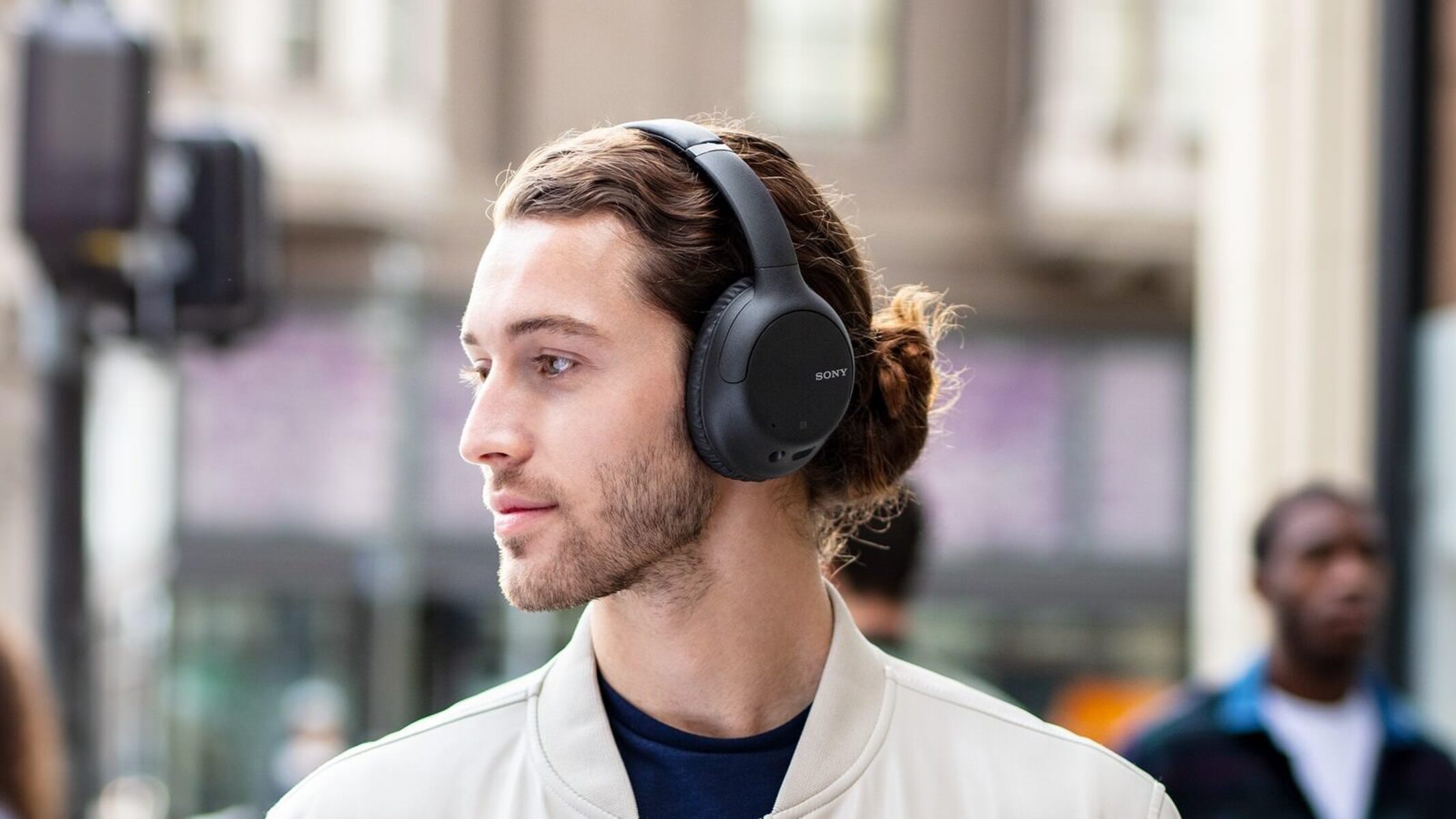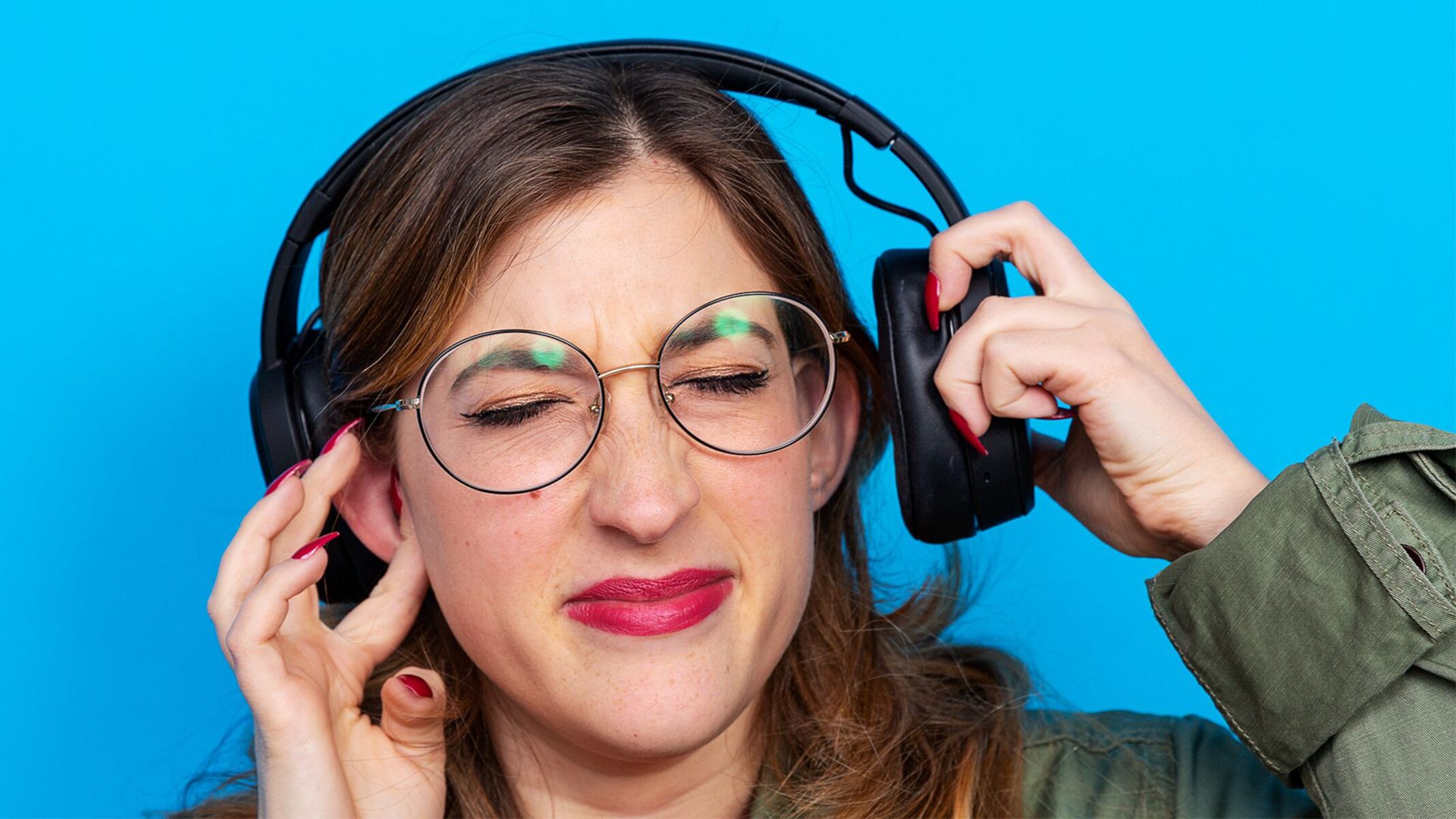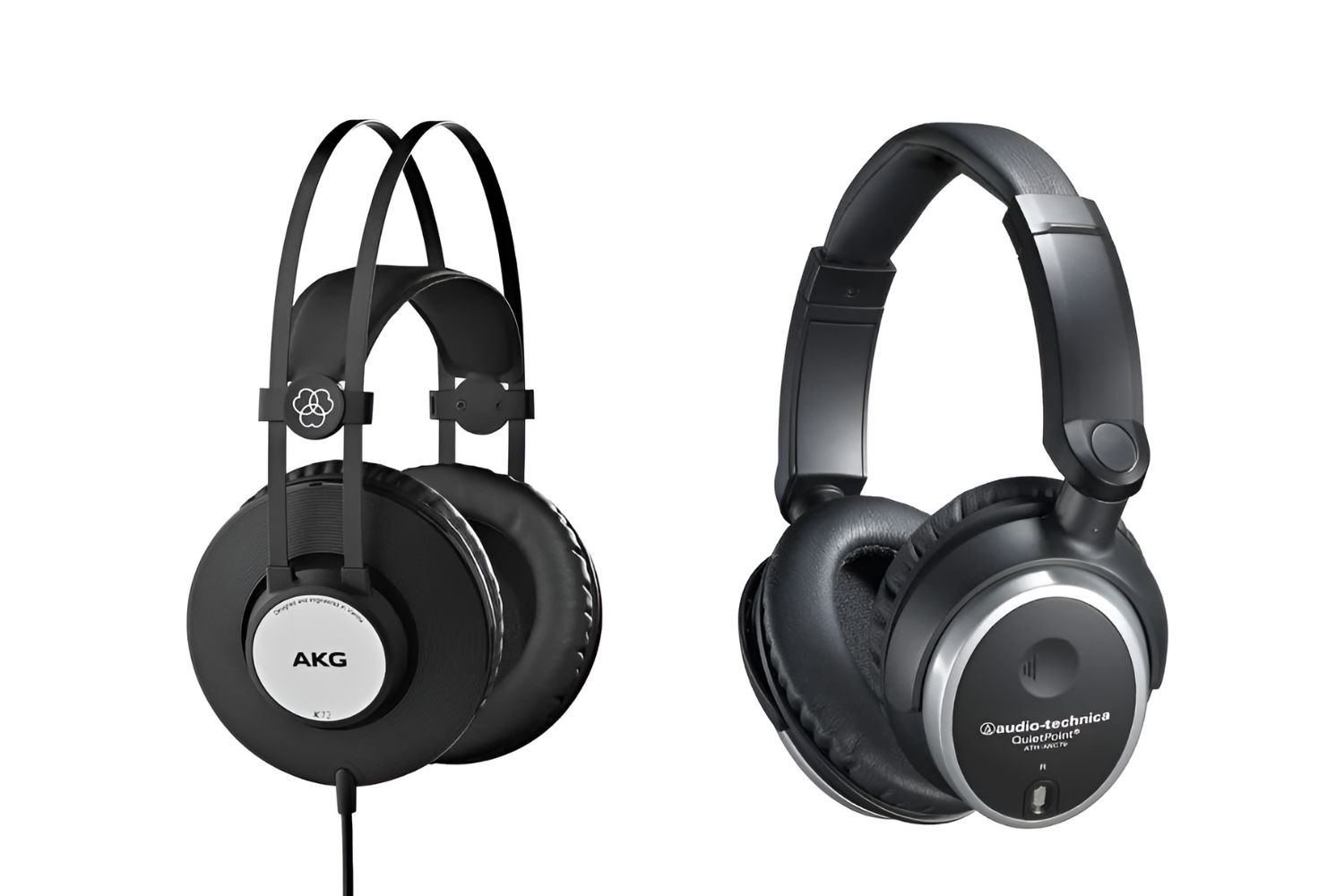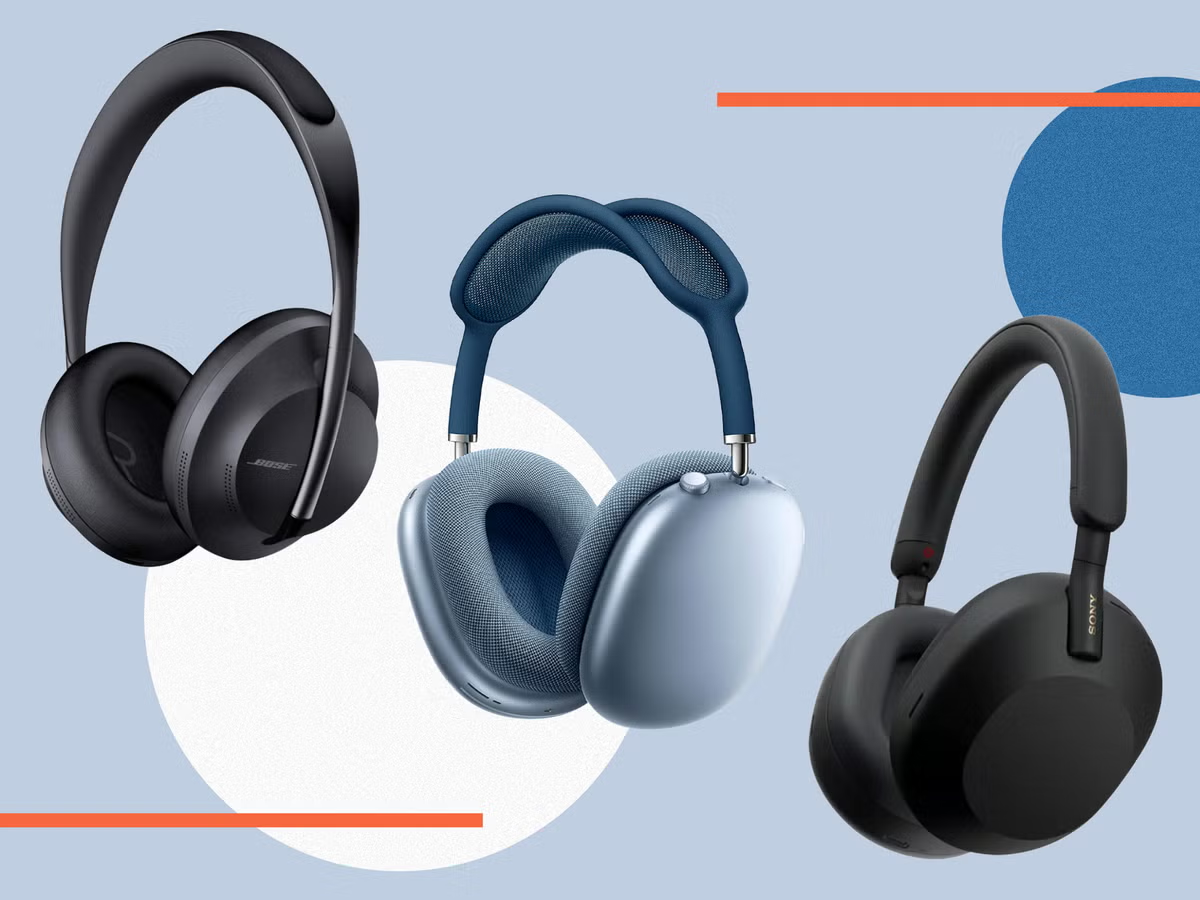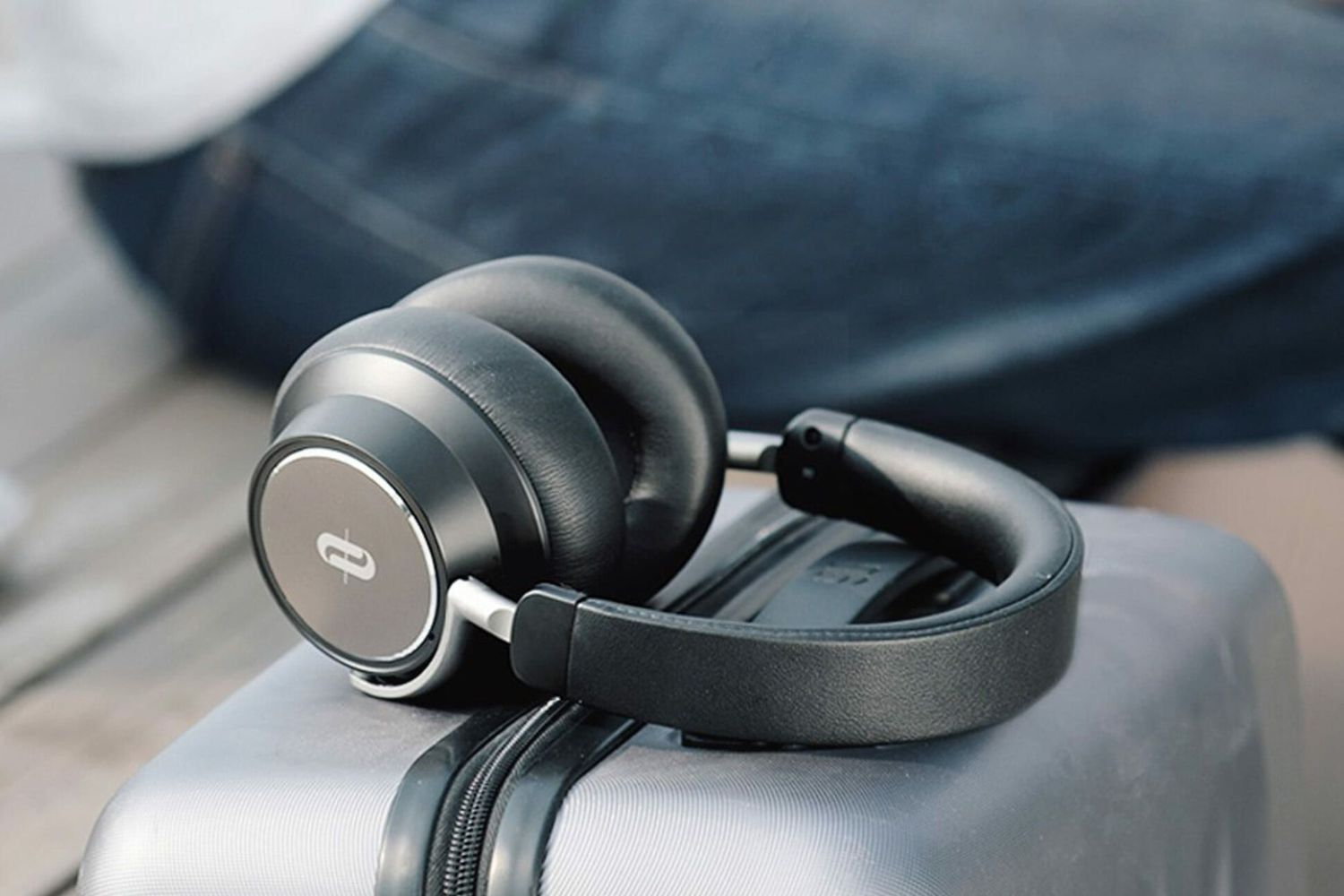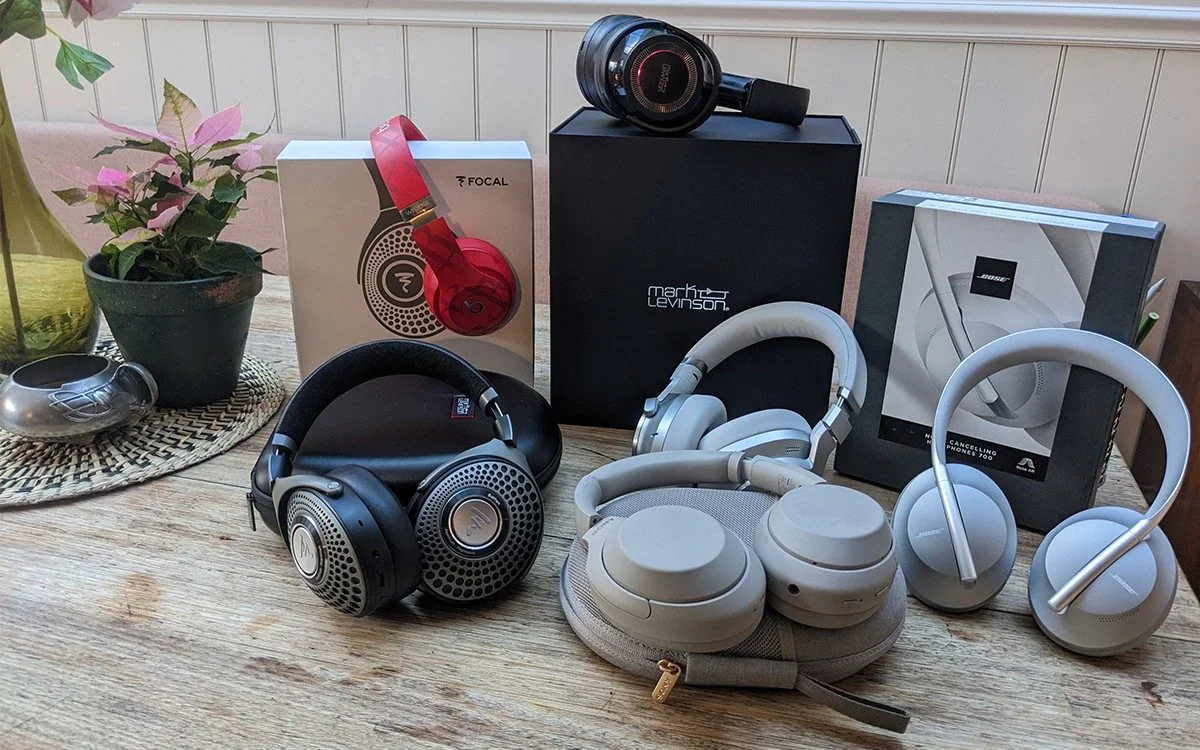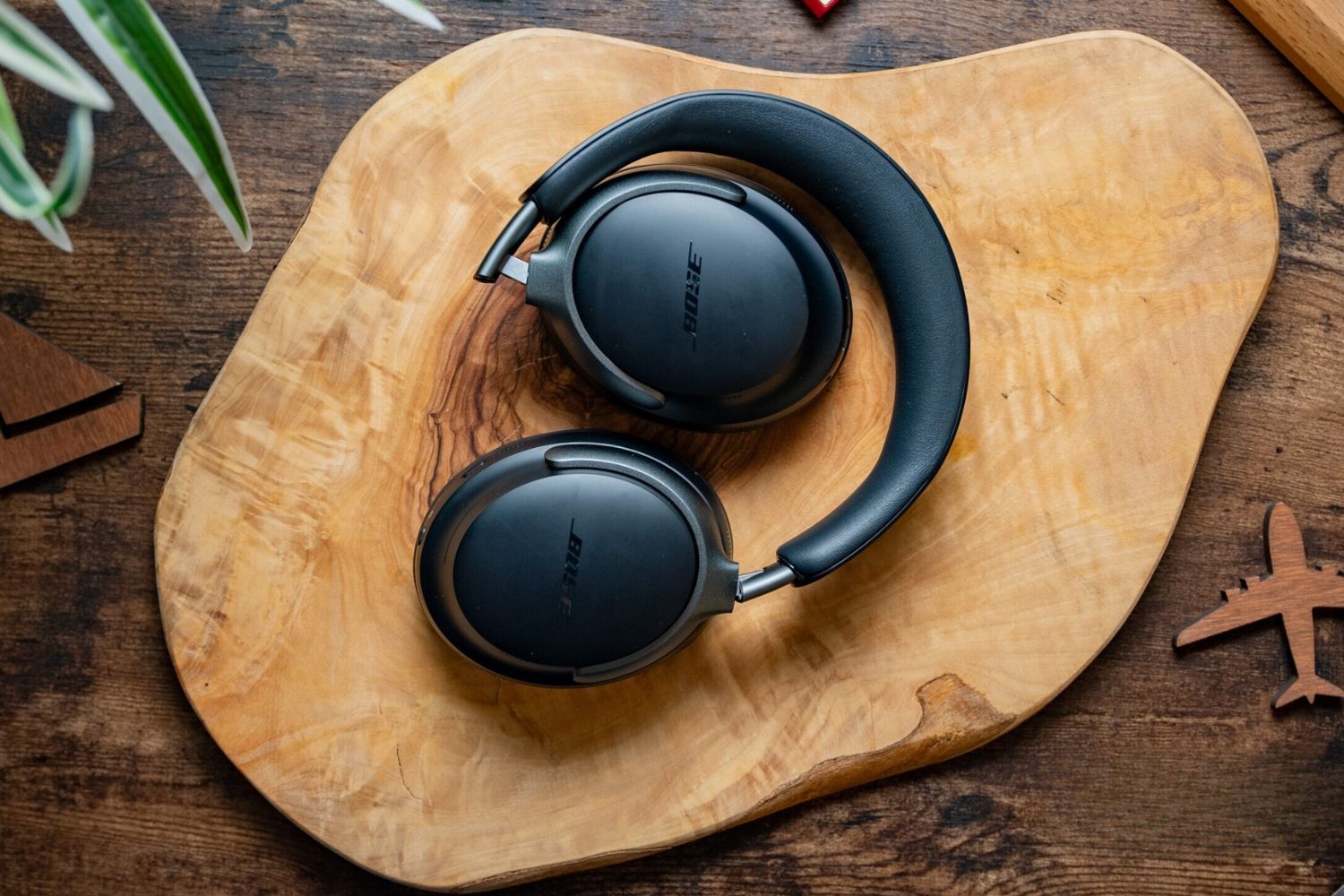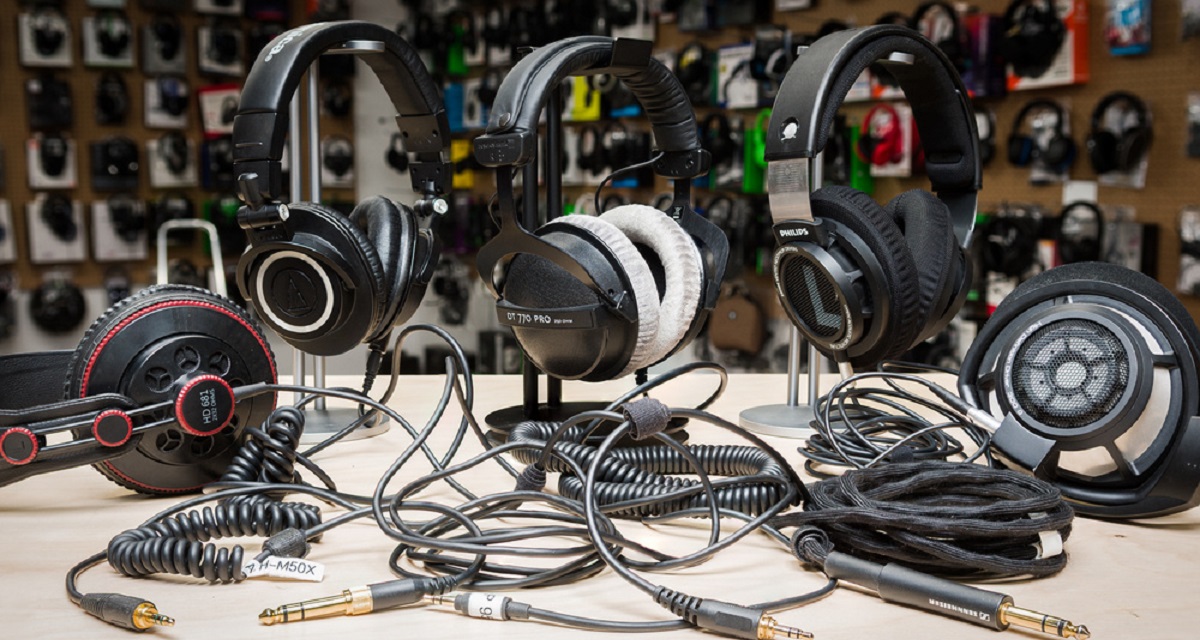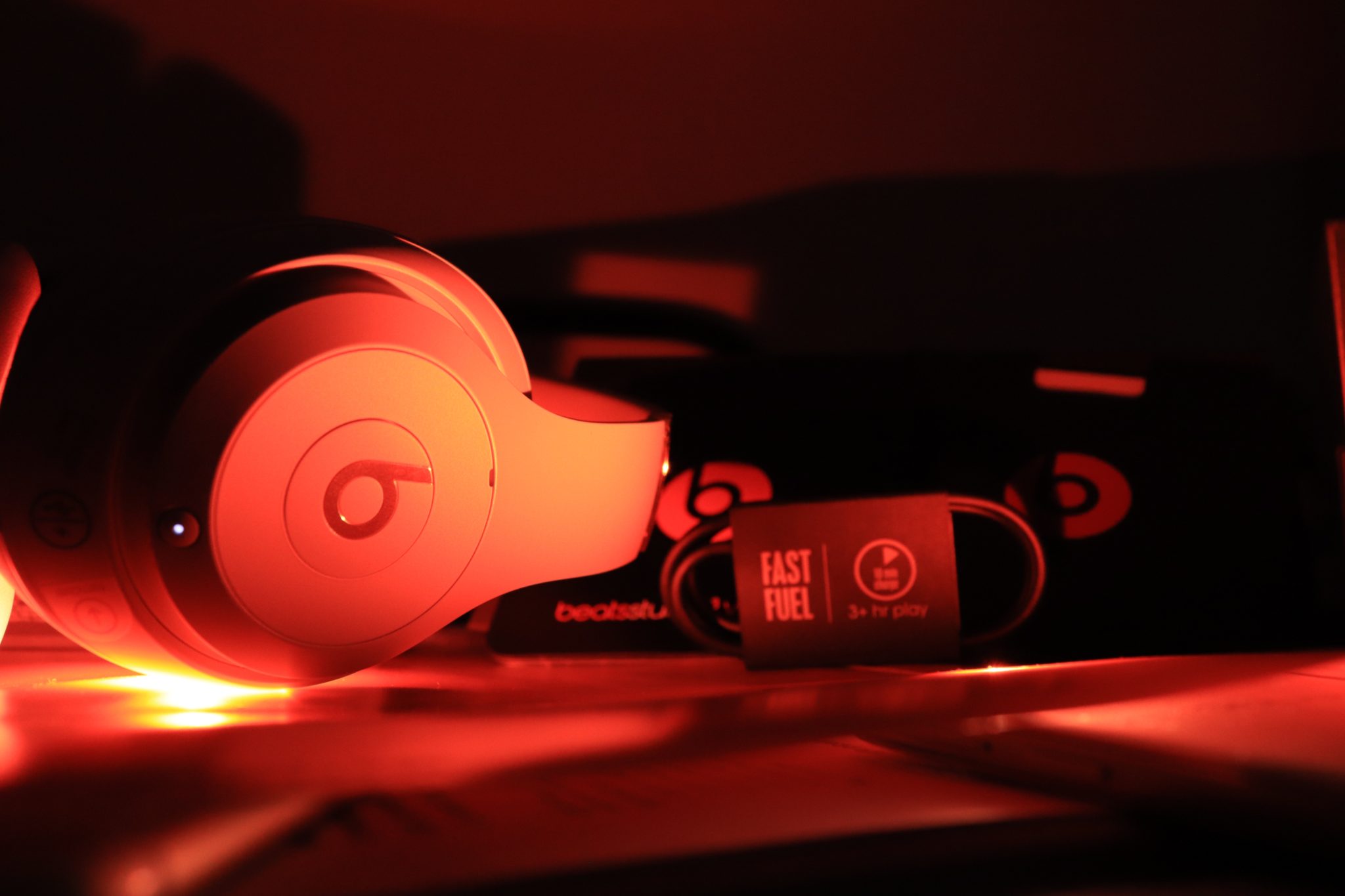Introduction
Welcome to the world of noise cancellation! If you’re tired of being constantly disturbed by external noises while you’re enjoying your favorite music or trying to focus on an important task, then you’ve come to the right place.
Noise cancellation technology has revolutionized the way we listen to audio and interact with our surroundings. By employing advanced algorithms and cutting-edge hardware, noise cancelling headphones can effectively eliminate unwanted sounds, allowing you to immerse yourself in your own auditory bubble.
In this article, we will guide you through the process of making your headphones noise cancelling, revealing the secrets to achieving a peaceful and uninterrupted listening experience. Whether you’re a music lover, a frequent traveler, or someone who simply wants to escape the hustle and bustle of everyday life, this guide will help you get the most out of your headphones.
We will explore different types of noise cancellation technologies, provide tips for choosing the best headphones for your needs, and explain how to set up and adjust your headphones to optimize their noise cancelling capabilities. By the end of this article, you’ll be equipped with all the knowledge and tools necessary to enjoy music and audio without any unwanted distractions.
So, get ready to dive into the world of noise cancellation and unlock the full potential of your headphones. Let’s get started!
Understanding Noise Cancellation
Before we dive into the process of making your headphones noise cancelling, it’s important to understand how noise cancellation technology actually works. By grasping the fundamental principles behind this technology, you’ll have a better understanding of what to look for in a pair of noise cancelling headphones and how to optimize their performance.
Noise cancellation works on the principle of inverse sound waves. When external noise enters the headphones, a microphone picks up the sound and analyzes its frequency and amplitude. The headphone’s circuitry then generates an identical sound wave, but with an inverted phase. When the original sound wave and the inverted sound wave combine, they cancel each other out, effectively reducing the overall noise.
It’s important to note that noise cancellation is most effective for low-frequency sounds, such as the hum of airplane engines or background chatter. Higher-frequency sounds, such as sharp sirens or sudden loud noises, are more difficult to cancel out completely.
There are two primary types of noise cancellation: passive and active. Passive noise cancellation involves physical barriers, such as over-ear cups or in-ear tips, that block out external sounds by creating a seal. This is particularly effective for high-frequency noise. Active noise cancellation, on the other hand, uses electronic circuitry to generate the inverted sound waves and cancel out the noise. Active noise cancellation is more effective for low-frequency noise.
When choosing noise cancelling headphones, it’s important to consider the level of noise cancellation provided. Some headphones offer adjustable noise cancellation settings, allowing you to customize the level of cancellation based on your specific environment and preferences. Additionally, the quality of noise cancellation can vary between different headphone models, so it’s worth researching and reading reviews to find the best option for your needs.
Now that you have a better understanding of the science behind noise cancellation, let’s move on to the next step: choosing the right headphones for your noise cancelling journey.
Types of Noise Cancellation
When it comes to noise cancellation technology, there are different approaches and techniques that headphone manufacturers employ. Understanding these different types can help you make an informed decision when choosing the right pair of noise cancelling headphones for your needs.
1. Feedforward Noise Cancellation:
This type of noise cancellation involves multiple microphones placed outside the ear cups of the headphones. These microphones pick up external sounds and feed them into the headphone’s circuitry, which then generates the inverse sound waves to cancel out the noise. Feedforward noise cancellation is effective for reducing continuous low-frequency noise, but it may not be as effective for sudden or impulsive sounds.
2. Feedback Noise Cancellation:
In this type of noise cancellation, the microphones are placed inside the ear cups of the headphones. They pick up the sound that reaches the ear and generate the inverse sound waves to cancel out the noise. Feedback noise cancellation can be effective for both low-frequency and high-frequency noise, providing a more comprehensive noise cancelling experience.
3. Hybrid Noise Cancellation:
As the name suggests, hybrid noise cancellation combines both feedforward and feedback techniques to provide a refined noise cancelling experience. This hybrid approach utilizes the strengths of both methods to cancel out a wider range of noises, delivering superior performance in various environments.
It’s important to note that the effectiveness of noise cancellation can vary depending on the quality and implementation of these techniques. Some headphones may emphasize one type of noise cancellation over the others, so it’s essential to consider your specific needs and the types of noise you encounter in your daily life.
Additionally, some headphones offer advanced features such as adaptive noise cancellation, which adjusts the level of cancellation based on the environment, and transparency mode, which allows you to hear external sounds without removing the headphones. These features can further enhance your listening experience and provide flexibility in different situations.
Now that you’re familiar with the different types of noise cancellation, let’s move on to the next step: selecting the perfect pair of headphones for your noise cancelling journey.
Choosing the Right Headphones
Now that you understand the basics of noise cancellation and the different types available, it’s time to choose the right headphones that will meet your specific needs and preferences. Here are some key factors to consider:
1. Noise Cancelling Performance:
Consider the level of noise cancellation that the headphones offer. Look for headphones that provide excellent noise reduction across a wide range of frequencies, especially in the frequency range where you encounter the most external noise. Reading reviews and consulting expert opinions can give you valuable insights into the performance of different headphone models.
2. Comfort and Fit:
Pay attention to the design and comfort of the headphones. Look for adjustable headbands, cushioned ear cups, and lightweight materials that ensure a comfortable fit even during extended listening sessions. An improper fit can compromise noise cancellation effectiveness and cause discomfort over time.
3. Audio Quality:
While noise cancellation is the primary focus, don’t overlook the audio quality of the headphones. Look for models that offer clear and balanced sound across the frequency spectrum. It’s worth considering headphones with customizable sound profiles or equalizer settings to tailor the sound to your preference.
4. Battery Life:
If you opt for wireless noise cancelling headphones, consider the battery life. Look for headphones that offer long-lasting battery performance to avoid interruptions during your listening sessions. Additionally, check if the headphones have a quick-charging feature for convenience.
5. Connectivity Options:
Depending on your preferences and usage, consider whether you prefer wired or wireless headphones. Wired headphones provide a consistent and reliable connection, while wireless headphones offer more freedom of movement. Ensure that the wireless headphones support the connectivity options you desire, such as Bluetooth compatibility.
6. Budget:
Finally, consider your budget. Noise cancelling headphones come in a wide price range, so it’s important to set a budget and look for options that offer the best value for money within your range. Remember that higher price does not always guarantee superior performance, so consider the features and performance rather than solely focusing on the price tag.
By considering these factors, you’ll be able to narrow down your options and find the perfect pair of headphones that meet your noise cancelling needs and fit your lifestyle. Once you’ve made your selection, it’s time to move on to the next step: setting up your headphones for optimal noise cancellation performance.
Setting Up Your Headphones
Now that you have chosen the perfect pair of noise cancelling headphones, it’s time to set them up for optimal performance. Follow these steps to ensure that your headphones are configured correctly:
1. Read the Manual:
Before diving into the setup process, take a moment to read the user manual that comes with your headphones. This will provide specific instructions and guidance on how to set up and use your particular model.
2. Charge the Battery:
If your headphones are wireless, make sure to charge the battery fully before using them. This ensures uninterrupted usage and prevents the headphones from running out of power in the middle of your listening session.
3. Connect the Headphones:
If your headphones have a wired connection, connect them to your audio device using the appropriate cable. If they are wireless, follow the manufacturer’s instructions to pair them with your audio device via Bluetooth or other wireless connectivity options.
4. Position the Headphones Properly:
Position the headphones correctly on your head for optimal noise cancellation. Ensure that the ear cups cover your ears completely and form a tight seal. Adjust the headband and ear cup positions to achieve a comfortable fit without any gaps that could interrupt the noise cancellation performance.
5. Test the Noise Cancellation:
Play some audio on your device and activate the noise cancellation feature on your headphones. Take a moment to assess the effectiveness of the noise cancellation and whether it meets your expectations. If the noise cancellation seems inadequate, adjust the positioning of the headphones or try different noise cancellation settings (if available) to optimize the results.
6. Experiment with Noise Cancellation Settings:
If your headphones offer adjustable noise cancellation settings, spend some time experimenting with different levels. Depending on your environment and personal preference, you may find that a higher or lower level of noise cancellation works best for you. Find the balance that allows you to enjoy your audio while minimizing external noise interference.
Once you have set up your headphones and optimized the noise cancellation settings, you are ready to immerse yourself in a world of uninterrupted audio bliss. However, there are a few additional tips and tricks that can further enhance your noise cancelling experience, which we will explore in the next section.
Adjusting Noise Cancellation Settings
Adjusting the noise cancellation settings on your headphones can make a significant difference in your listening experience. While each headphone model may have its own specific settings, here are some general tips to help you optimize noise cancellation:
1. Environment Awareness:
Consider the environment in which you will be using your headphones. If you are in a noisy setting, such as a bustling coffee shop or a crowded train, you may want to increase the noise cancellation level to block out as much external noise as possible. On the other hand, if you are in a relatively quiet space, you may prefer to lower the noise cancellation level to allow some ambient sound through for safety and awareness.
2. Music Volume:
Take into account the volume of the audio you are listening to. If you tend to listen at a high volume, you may want to increase the noise cancellation level to compensate for the added external noise. Conversely, if you prefer lower volume levels, you may be able to decrease the noise cancellation level while still enjoying a peaceful listening experience.
3. Testing and Personalizing:
Take the time to test different noise cancellation settings and find the one that works best for you. Start by playing audio at a comfortable volume and gradually adjust the noise cancellation level, paying attention to the quality of the sound and the reduction of external noise. Keep in mind that everyone’s preference is unique, so personalize the settings based on what provides the most pleasant and immersive experience for you.
4. Quick Attention Mode:
Some noise cancelling headphone models offer a quick attention mode. This feature allows you to temporarily disable noise cancellation and amplify external sounds with a simple gesture or button press. It can be handy when you need to quickly interact with others or be aware of your surroundings without removing your headphones entirely.
5. Firmware Updates:
Keep your headphones’ firmware up to date. Manufacturers often release firmware updates that can improve the performance and functionality of your headphones, including enhancements to the noise cancellation algorithm. Regularly check for updates and install them as recommended by the manufacturer.
Remember that noise cancellation is not a one-size-fits-all solution. Experiment with different settings and take the time to find the right balance between noise reduction and environmental awareness. By adjusting the noise cancellation settings to suit your preferences, you can enjoy a tailor-made audio experience that will enhance your enjoyment of music, movies, podcasts, or any other audio content.
Now that you have a solid understanding of how to adjust the noise cancellation settings on your headphones, let’s explore some additional tips and tricks for maximizing the effectiveness of noise cancellation.
Additional Tips for Noise Cancellation
While noise cancelling headphones are designed to minimize external distractions, there are some additional tips and tricks you can use to enhance their effectiveness. Here are a few recommendations:
1. Find the Right Fit:
Ensure that your headphones fit properly and create a seal around your ears. This helps to block external noise and improve the overall noise cancellation performance. Adjust the headband and ear cups as necessary to achieve a snug and comfortable fit.
2. Avoid Noise Leaks:
Make sure there are no gaps or leaks between your headphones and your head. Even a small opening can allow external noise to seep in and reduce the effectiveness of noise cancellation. Position the ear cups securely over your ears and adjust the headband tension accordingly.
3. Reduce Background Noise:
If you’re in a particularly noisy environment, consider reducing the ambient noise as much as possible. For example, closing doors and windows, moving to a quieter area, or using soundproofing materials can all help to minimize the external noise that your headphones have to cancel out.
4. Minimize Audio Interruptions:
To fully immerse yourself in sound, minimize any audio interruptions or disturbances. This includes turning off notifications on your mobile devices, disabling background noise from apps, and choosing a quiet location for your listening sessions.
5. Take Breaks:
While noise cancelling headphones can provide a fantastic listening experience, it’s important to give your ears periodic breaks. Extended use of headphones, especially at high volumes, can cause fatigue and potentially affect your hearing. Take regular breaks to give your ears some rest.
6. Clean Your Headphones:
Maintain the cleanliness of your headphones to ensure optimal performance. Follow the manufacturer’s cleaning guidelines, regularly wipe down the ear cups and headband with a soft cloth, and remove any debris or wax buildup from the ear pads. A clean headphone surface allows for better contact and seal around your ears.
By implementing these additional tips, you can enhance the effectiveness of noise cancellation and create an optimal listening environment tailored to your preferences. Remember, noise cancellation is a powerful tool, but it’s important to use it responsibly and prioritize your hearing health.
With these tips in mind, you are well-equipped to enjoy a more immersive and distraction-free audio experience with your noise cancelling headphones.
Now, let’s wrap up our exploration of noise cancellation technology and its benefits.
Conclusion
Noise cancellation technology has transformed the way we listen to audio, allowing us to escape the distractions of the outside world and immerse ourselves in our favorite music or audio content. By understanding the basics of noise cancellation, exploring the different types of noise cancellation technologies, and choosing the right headphones for your needs, you can create an unparalleled listening experience that is tailored to your preferences.
Setting up your headphones correctly and adjusting the noise cancellation settings to suit your environment and audio preferences will further optimize the effectiveness of noise cancellation. By ensuring a proper fit, minimizing noise leaks, and taking steps to reduce background noise, you can maximize the effectiveness of your noise cancelling headphones.
Remember to take breaks and prioritize your hearing health. While noise cancellation can provide a delightful and uninterrupted auditory experience, it’s important to give your ears periodic rest to avoid fatigue and potential long-term hearing issues.
With the additional tips and tricks, such as finding the right fit, avoiding noise leaks, reducing background noise, minimizing interruptions, and keeping your headphones clean, you can enhance the overall noise cancellation experience and enjoy audio in its purest form.
Whether you’re a music enthusiast, frequent traveler, or simply someone seeking a moment of tranquility, noise cancelling headphones offer a gateway to a world of immersive and uninterrupted audio enjoyment. So, go ahead and dive into the realm of noise cancellation – experience the magic of audio without the interference of external distractions.
Now that you’re equipped with the knowledge and tools to make your headphones noise cancelling, it’s time to put your newfound expertise to good use and embark on a journey of blissful and uninterrupted listening.







